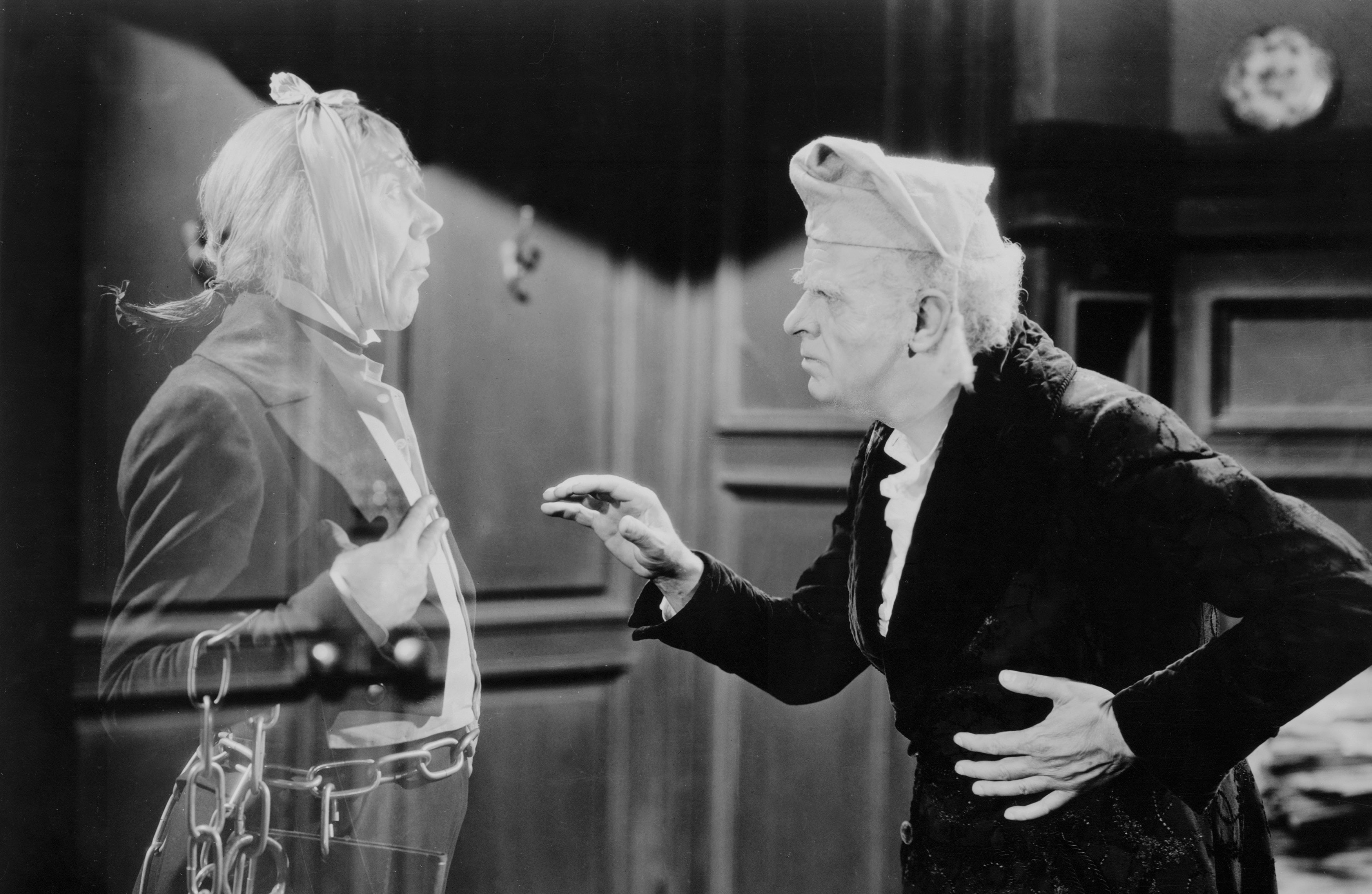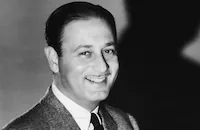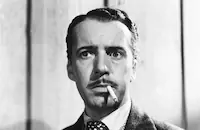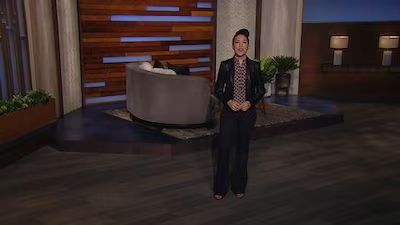A Christmas Carol

Brief Synopsis
Cast & Crew
Edwin L. Marin
Reginald Owen
Gene Lockhart
Kathleen Lockhart
Terry Kilburn
Barry Mackay
Film Details
Technical Specs

Synopsis
On Christmas Eve, in mid-nineteenth century London, the miserly, hardhearted Ebenezer Scrooge is visited by his kindly nephew Fred who invites him to dinner with him and his fiancée Bess. Scrooge gruffly refuses, considering Christmas a humbug, and although he gives his underpaid clerk Bob Cratchit the day off, he later fires him when the meek Bob mistakenly pelts him with a snowball. Bob does not tell his family, though, and buys the family's hoped for Christmas feast. The Cratchits are happy, though poor, with their one sorrow the health of Tiny Tim, their crippled youngest child. As the Cratchits and Fred enjoy Christmas Eve, Scrooge goes to his empty house where he is visited by the chained shade of Jacob Marley, Scrooge's late partner, who warns Scrooge that he must change his ways. He also tells Scrooge that three ghosts will visit him that night. Scrooge disdains Marley's words until their visits. The first, the Spirit of Christmas Past, shows him his lonely childhood, the second, the Spirit of Christmas Present, shows him the happiness of Fred and the Cratchits. The third, the Spirit of Christmas Future, reveals to Scrooge his own mournerless death and the sadness following that of Tiny Tim. Though the shade does not speak, Scrooge pleads that he will change. When he awakens, he is a different man. He happily buys turkey and presents and gives generously to men collecting for the poor. He visits Fred and makes him his partner, then goes to the Cratchits' house where he gives them gifts, and promises Bob a raise. After vowing to keep the spirit of Christmas throughout the year, he makes the toast, "To all of us, everywhere, a Merry Christmas to us all, my dears," and Tiny Tim adds "God bless us, everyone."

Director

Edwin L. Marin
Cast

Reginald Owen

Gene Lockhart
Kathleen Lockhart

Terry Kilburn
Barry Mackay

Lynne Carver

Leo G. Carroll
Lionel Braham

Ann Rutherford
D'arcy Corrigan

Ronald Sinclair
June Lockhart

Halliwell Hobbes
Charles Coleman
Forrester Harvey
Matthew Boulton
John O'day
Lauri Beatty
Bill Martin
Muriel Kearney
Elvira Stevens
Charles Peck

Billy Bevan
Harold Henson
Olaf Hytten
Hugh Harrison
James H. Stevens
Crauford Kent
Eric Wilton
Clifford Severn
Richy Deane
Renee Shearing

Harry Cording
George Kirby
John Rogers
Maude Leslie
Gertrude Geyer
Norma Leslie
Doris Stone
Monte Vandergrift
St. Luke's Choristers
William Stack

Boyd Irwin
Colin Kenny
Herbert Evans
Frank Benson
David Dunbar
Bill James
Douglas Gordon
Bob Carey
Crew
George Boemler
Hugo Butler
Jack Dawn
John Detlie
Cedric Gibbons
Joseph L. Mankiewicz
John Seitz
Douglas Shearer
Marvin Stuart
Valles
Sidney Wagner
Franz Waxman
Edwin B. Willis
Dolph Zimmer

Photo Collections
Videos
Movie Clip




Trailer
Hosted Intro



Film Details
Technical Specs

Articles
A Christmas Carol (1938) - A Christmas Carol
The story of the production of the 1938 adaptation is a troubled one and perhaps the writing was on the wall when the producers couldn't get the actor they wanted for the lead. In fact, it was the actor everybody wanted for the lead, Lionel Barrymore. Although not widely known today, in the thirties, Lionel Barrymore owned the role of Ebenezer Scrooge as much as Clint Eastwood owned the role of Dirty Harry or Sean Connery owned the role of James Bond. It was associated with Barrymore and no one else because he played it on the radio every year. Anyone who has seen Barrymore play cranky and crotchety, as in his Mr. Potter in It's a Wonderful Life (1946), can only imagine how wonderful his performance in a film version of A Christmas Carol would have been. But, sadly, Barrymore's health wouldn't allow it.
Lionel Barrymore had arthritic problems for years so when he broke his hip in 1936, events were set in motion that would eventually lead to lifetime confinement in a wheelchair. The hip was slow to heal and then, just a year later, when working on reshoots for Saratoga (1937), he fell again, this time the result of a loose cable that caught his ankle. Barrymore broke his hip again and this time the fracture never fully healed. Combined with his already painful arthritis, Barrymore could no longer walk. MGM had to go ahead with their production of A Christmas Carol but needed a new actor and the one they chose was veteran stage and screen actor Reginald Owen. He would even play Scrooge on the radio that year so audiences wouldn't have two Scrooges to judge against each other. Barrymore, though crushed, was loyal to MGM and even agreed to do a trailer for the movie where he praises Reginald Owen's performance. It must have been hard for Barrymore but MGM knew that if the movie had his public blessing, Reginald Owen would go over much better as Ebenezer Scrooge.
With their new Scrooge in place, it came time to make the movie and that had to happen fast. Delays had already put the movie behind and everything was done in six weeks with many changes from the original source novella by Charles Dickens. It's those changes that made the movie problematic for many fans. At first, with only this version being the one most people saw, it wasn't as noticeable. Eventually, however, with other versions pursuing a more loyal take on the novella, the differences began to detract. For one, the wandering, suffering souls that Jacob Marley shows Scrooge outside his window were excised from the script. Though this became one of the most powerful moments in all future adaptations, it was thought at the time to be too disturbing for a family audience. The same goes for the two children under the cloak of the Ghost of Christmas Present. Other subplots, like the practically nonexistent one of Freddy and his wife, were expanded for the movie to few if anyone's liking. Finally, Scrooge's fiancée was cut from the story altogether.
However, it wasn't all for the worse. One change worked so well, all future adaptations latched onto it and never let go. In the novella, Jacob Marley describes the visitation of the ghosts this way to Scrooge: "Expect the first tomorrow, when the bell tolls one... Expect the second on the next night at the same hour. The third upon the next night when the last stroke of twelve has ceased to vibrate. " That's right, the novella itself gives the three ghosts three nights to do their work. The 1938 adaptation gave them three hours, at one, two and three. Practically every major adaptation since has done it the same way.
The movie completed, it premiered to good notices and decent box office. Years later it became regular seasonal viewing on television until other more faithful versions supplanted it. In the end, the movie has much to offer, including a stellar cast and a family of actors playing a family. Gene and Kathleen Lockhart play Bob and Mrs. Cratchit and their real-life daughter, June, plays the oldest Cratchit daughter, Belinda. Later, she would become famous as the mother on the popular sixties TV series, Lost in Space. The great Leo G. Carroll plays the ghost of Jacob Marley and Reginald Owen does well in the lead role of Ebenezer Scrooge. And above all, it's unique. Watching the Reginald Owen version of A Christmas Carol gives one the familiar story of redemption but also allows the viewer the opportunity to see what happens when a studio decides to change Dickens. It may not be the most popular version around anymore, but it's still A Christmas Carol and that's always a story worth seeing.
Director: Edwin L. Marin Producer: Joseph L. Mankiewicz Screenplay: Hugo Butler, based on the novel by Charles Dickens Cinematography: Sidney Wagner Editor: George Boemler Art Direction: Cedric Gibbons Music: David Snell (uncredited), Franz Waxman Cast: Reginald Owen (Ebenezer Scrooge), Gene Lockhart (Bob Cratchit), Kathleen Lockhart (Mrs. Cratchit), Terry Kilburn (Tiny Tim), Barry MacKay (Fred), Lynne Carver (Bess), Leo G. Carroll (Marley's Ghost)
By Greg Ferrara
Sources: IMDB Wikipedia

A Christmas Carol (1938) - A Christmas Carol
A Christmas Carol (1938)
Although there have been many screen adaptations of the novel by Charles Dickens, this was the first American film version and probably the most memorable. Director Edwin Marin, a steadfast and competent director of medium budget films for MGM studios from 1934 to 1941, was given high praise for this production. MGM began the project with the intent to have Lionel Barrymore play Scrooge. Barrymore had played the miserly character on his annual Christmas radio show for many years previously and the studio hoped to take advantage of his popularity. Before production could begin, however, Barrymore was working on retakes of the film
With only six weeks left to shoot A Christmas Carol (1938), M-G-M reluctantly moved forward with production. At the urging of Barrymore himself, Reginald Owen was tapped to play Scrooge in the movie AND on Barrymore's annual radio show. Owen had begun his career onstage in London in 1905, played Broadway in 1924 and finally moved to Hollywood in the late ╘20s. Landing both roles as Ebenezer Scrooge was a huge coup for Owen, and he did not disappoint. Critics consider this to be one of the most successful roles of his career.
Husband and wife team, Gene and Kathleen Lockhart, delivered a well regarded performance as the "Cratchets" and Lionel Braham, Ann Rutherford and D'Arcy Corrigan play the Ghosts of Christmas Present, Past and Future, respectively, those characters ultimately responsible for Scrooge's transformation.
Director: Edwin L. Marin
Producer: Joseph L. Mankiewicz
Screenplay:Hugo Butler, based on the novel by Charles Dickens
Cinematography: Sidney Wagner
Editor: George Boemler
Art Direction: Cedric Gibbons
Music: David Snell (uncredited), Franz Waxman
Cast: Reginald Owen (Ebenezer Scrooge), Gene Lockhart (Bob Cratchit), Kathleen Lockhart (Mrs. Cratchit), Terry Kilburn (Tiny Tim), Barry MacKay (Fred), Lynne Carver (Bess)
BW-70m. Close captioning.
by Mary Anne Melear
A Christmas Carol (1938)
A Christmas Carol (1938) - The 1938 Version of Dickens' A Christmas Carol on DVD
This 1938 MGM version sticks with the basic story setup. Curmudgeonly miser Ebenezer Scrooge (Reginald Owen) hates Christmas good cheer and all that goes with it. He sends his employee Bob Cratchit (Gene Lockhart) home on Christmas Eve begrudging him the holiday, and ends up firing the clerk in an unfortunate snowball accident. Cratchit goes a little bonkers and spends all of his cash on a fancy feast for his impoverished family. The Christmas Eve misery of the story is replaced with a big party, an odd turn of events that saps some of the glory from Ebenzer's surprise goose the next day. Scrooge is also given a deserving nephew Fred (Barry Mackay) who wants to marry but cannot because of poor finances; Scrooge offers Fred with the same sentiments he reserves for the needy poor: Let them go to prisons or poorhouses. Or just die and alleviate the surplus population problem.
This cheerful reworking unbalances Dickens' story somewhat - Jolly Fred and his pretty fiancée Bess (Lynne Carver), Cratchit's snowball fight and the mostly happy first feast are more 'Christmasy' but detract from the author's intention to create a haunting ghost story. The middle section with the spectral visitations is rushed and far from frightening. Leo G. Carroll's ghost of Marley gives Ebenezer a quick lecture about his greedy ways and then moves on. Lionel Braham's Spirit of Christmas Present displays some examples of holiday good will, Ann Rutherford's Spirit of Christmas Past takes him on a quickie visit to Scrooge's youth, and D'Arcy Corrigan's Spirit of Christmas Future shows Ebenezer the bad news that lies ahead, just by pointing a finger out from under his dark shroud.
The problem with the center section is that we don't really feel Scrooge changing. Reginald Owen protests weakly about frugality being good for a businessman but responds almost immediately to the ghosts' reconditioning efforts. A few phantoms later, he's a generous and cheerful soul. The little scenes played out for Scrooge lack depth or feeling, seeming almost like one of those 'trick realities' dreamed up by the team of espionage con-men in the old Mission: Impossible TV show.
The exuberant windup on Christmas morning still works like a charm, showing the unsinkable nature of Dickens' tale. Scrooge gets big laughs when Mrs. Cratchit thinks he's gone loony and will harm the children. I don't hear anything said about Tiny Tim being sent to the Mayo clinic but Scrooge definitely sets things right with Cratchit and his nephew Fred. It looks as though it won't be "medical experiments" for the Cratchit kids after all!
Given the English setting, MGM and Mankiewicz did well by not trying to jam Jackie Cooper or Judy Garland into the show. Critics are forever comparing Reginald Owen unfavorably to Alastair Sim, perhaps with justification, but Gene Lockhart's Cratchit is just about perfect. It's pleasant seeing Lockhart's wife Kathleen playing his screen wife, along with the cute 13 year-old June Lockhart (later from TV's Lassie and Lost in Space) as one of his daughters. Terry Kilburn, the little kid who chirps "Goodbye, Mr. Chips!" in the film of the same name is Tiny Tim; he has a fixed grimace that passes for a smile. Ann Rutherford, the Ghost of Christmas Past, was a fixture in Andy Hardy movies and would soon decorate the Glenn Miller Fox musical, Orchestra Wives.
Young Ebenezer is played by Ronald Sinclair, MGM’s Eddie Bartholomew substitute who acted with Judy Garland and made about fifteen movies before becoming a film editor. He eventually worked with Roger Corman and ended up cutting a great many American-International films.
Warners' DVD of the 1938 A Christmas Carol is a fine pressing of a B&W film element in good shape, with clear audio. It's being released as part of a Warner Bros. Classic Holiday Collection with Boys Town and Christmas in Connecticut. There are three extra short subjects. The first is called Jackie Cooper's Christmas Party and features the kid actor (acting a little young for his 14 years) visiting various adult stars to worry about the party he's giving for his football team. The second item is an unattributed snippet consisting of one angle of Judy Garland singing "Silent Night," book-ended by a stock shot of a snowy house It was prepared for use at an MGM employee party.
The final extra is a crazy Technicolor cartoon called Peace on Earth, that technically gets the drop on the dark finale of On the Beach: A bunch of furry forest animals of the kind that Tex Avery would lampoon live in helmets and other gear left over on a snow-covered battlefield. War is no more because mankind has been eradicated in a WW1-style Armageddon. As grand-dad squirrel tells the story to his kids, we see the last (animated) human soldier die on screen. I doubt that Hugh Harman's animation people realized what they were saying, exactly...the little rodents still sing about "Peace on Earth, good will toward Men.
.
For more information about A Christmas Carol, visit Warner Video. To order A Christmas Carol, go to TCM Shopping.
By Glenn Erickson
A Christmas Carol (1938) - The 1938 Version of Dickens' A Christmas Carol on DVD
Quotes
Please let me stay!- Ebenezer Scrooge
Nonsense! You don't want to stay!- Ghost of Christmas Present
Yes, I do!- Ebenezer Scrooge
No! You don't like Christmas!- Ghost of Christmas Present
Yes! Yes I do! I like Christmas! I LOVE Christmas!- Ebenezer Scrooge
Fred! My dear nephew! How are you?- Ebenezer Scrooge
Who are you?- Fred
It's me! Your uncle Scrooge! Smile makes a difference, doesn't it?- Ebenezer Scrooge
Trivia
Lionel Barrymore was originally set to play Scrooge, but had to back out due to illness. Barrymore instead suggested his friend Reginald Owen take over the role.
John Seitz temporarily replaced cameraman Sidney Wagner during production when Wagner was ill with a bad case of flu, and Marvin Stuart replaced assistant director Dolph Zimmerwhen Zimmer had a cold.
Lionel Barrymore was originally cast as Scrooge, a role which he had performed on radio each Christmas morning for several years, but ill-health prevented him from being in the production. It was he who suggested Reginald Owen for the part. Barrymore did not perform the radio version of A Christmas Carol in 1938 so that it would not interfere with the success of the picture, and he appeared in a special trailer for it called "A Fireside Chat with Lionel Barrymore", which was produced by Frank Whitbeck and directed by 'Edward L. Marin' .
M-G-M released 375 prints of the film, a record number, so that as many people as possible could see it during the Christmas season.
This was the only film in which Gene Lockhart appeared with his wife Kathleen and their daughter June.
Notes
According to Hollywood Reporter news items, John Seitz temporarily replaced cameraman Sidney Wagner during production when Wagner was ill with a bad case of flu, and Marvin Stuart replaced assistant director Dolph Zimmer when Zimmer had a cold. According to various news items and material from the picture's press pack, Lionel Barrymore was originally cast as Scrooge, a role which he had performed on radio each Christmas morning for several years, but ill-health prevented him from being in the production. It was he who suggested Reginald Owen for the part. Barrymore did not perform the radio version of A Christmas Carol in 1938 so that it would not interfere with the success of the picture, and he appeared in a special trailer for it called "A Fireside Chat with Lionel Barrymore" which was produced by Frank Whitbeck and directed by Edward L. Marin. An Hollywood Reporter news item and the Variety review note that M-G-M released 375 prints of the film, a record number, so that as many people as possible could see it during the Christmas season. An M-G-M production bulletin noted that it took Owen almost two hours each day in makeup to prepare for his role. Reviews noted that it was English actor Barry Mackay's first American role. New York Times mentioned that the Radio City Music Hall showing of the film was preceded by a special holiday revue featuring the Vienna Boys Choir and the Walt Disney cartoon, "Mother Goose Goes Hollywood."
There have been many adaptations of Dickens' story, beginning with a British short produced in 1901. There was an Edison short in 1911 and a feature length British version in 1914. A British version called Scrooge starring Sir Seymour Hicks was released in 1935. Perhaps the most famous version was the 1951 British film with Alistair Sim. Ronald Neame directed another British version called Scrooge, a musical starring Albert Finney, in 1970. A modernized variation of the story was the 1988 Paramount comedy called Scrooged starring Bill Murray.
Several animated versions of the story have made, including the Walt Disney short cartoon adaptation, ^Mickey's Christmas Carol , released in 1983 and featuring the voices of Alan Young and Clarence Nash. In 2001, an animated version with live action was released under the title A Christmas Carol. The British-Germany co-production was directed by Jimmy T. Murakami and featured the voices of Simon Callow and Kate Winslet.
In addition to films, there have been a number of radio and television adaptations of the Dickens story, among them a 1939 Mercury Theatre radio broadcast narrated by Orson Welles, a one hour ABC television production in 1954 with Fredric March and a 1988 Hallmark Hall of Fame production with George C. Scott.















